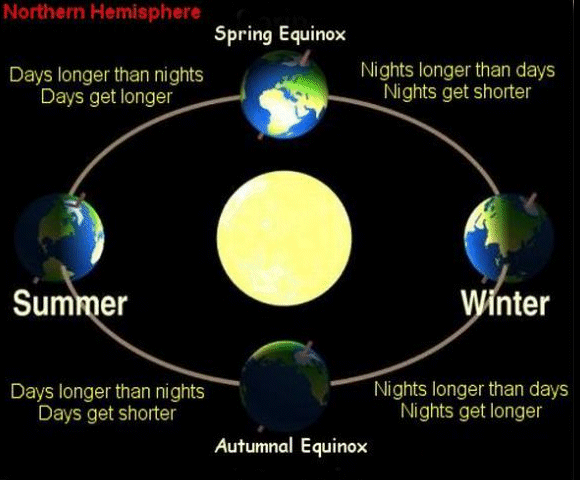
You might also notice that both of these locations have daylight times longer than 12 hours. The differences are due to how the sunlight gets refracted (bent) as it enters Earth’s atmosphere at different latitudes.

Key West, Florida, will see 12 hours and seven minutes. For instance, on Monday, Fairbanks, Alaska, will see 12 hours and 14 minutes of daylight. 3) How many hours of daylight will I get on the equinox?Įquinox literally means “equal night.” And during the equinox, most places on Earth will see approximately 12 hours of daylight and 12 hours of darkness.īut not every place will experience the exact same amount of daylight. Meteorological spring includes March, April, and May meteorological summer includes June, July, and August meteorological fall includes September, October, and November and meteorological winter includes December, January, and February.Īstronomically speaking, yes, fall begins when the Southern Hemisphere begins to receive more sunlight than the Northern Hemisphere. Meteorologically speaking, summer is defined as the hottest three months of the year, winter is the coldest three months, and the in -between months are spring and fall. Well, depends: Are you asking a meteorologist or an astronomer? Instructions here.) 2) Is the equinox really the first day of autumn? All you need is a can, photo paper, some tape, and a pin.

(You can easily make a similar image at home. We are one of the sunniest cities in Canada, and this shows it nicely.Posted by Ian Hennes on Saturday, December 21, 2013 This is a 6 month pinhole photo taken from solstice to solstice, in Medicine Hat, Alberta, Canada. You can see the dramatic change in the arc of the sun from December to June. In 2013, a resident of Alberta, Canada, took this pinhole camera photograph of the sun’s path throughout the year and shared it with the astronomy website EarthSky. So hang on to this simple, sweet thought: There’s always a bit more daylight than darkness on Earth, as a whole.Īnd here’s yet another cool way to visualize the seasons. This “results in the land covered by sunlight having greater area than the land covered by darkness,” the National Oceanic and Atmospheric Administration (NOAA) explains. That’s because our atmosphere bends sunlight a bit, essentially stretching it over a slightly greater area of land. NASA/ Meteosat/ Robert SimmonĪ fun fact about the terminator: It’s not the case that it splits the Earth into even halves of light and dark. In the video, you can see how the line separating day from night (called the terminator) swings back and forth from the poles during the year. Here’s a time-lapse demonstration of the phenomenon shot over the course of a whole year from space. For the other half of the year, the South Pole gets more light. The tilt - possibly caused by a massive object hitting Earth billions of years ago - means that for half the year, the North Pole is pointed toward the sun (as in the picture below). The fall and spring equinoxes, the seasons, and the changing length of daylight hours throughout the year are all due to one fact: Earth spins on a tilted axis.


This will happen at 3:21 pm Eastern on Wednesday (for some parts of the world, it will be Thursday morning at this time).īelow is a short scientific guide to the most equal night of the season. Technically speaking, the equinox occurs when the sun is directly in line with the equator.
#SOLSTICE AND EQUINOX 2021 FULL#
This week’s full moon - the closest to the fall equinox, and this year the last full moon of summer - occurs on Tuesday and is known as the harvest moon. For those south of the equator, it’s the beginning of spring. The autumnal equinox is upon us: On Wednesday, September 22, the Northern and Southern hemispheres will experience an equal amount of daylight.įor those in the Northern Hemisphere, it marks the beginning of astronomical fall, with daylight hours continuing to shorten until the winter solstice in December.


 0 kommentar(er)
0 kommentar(er)
